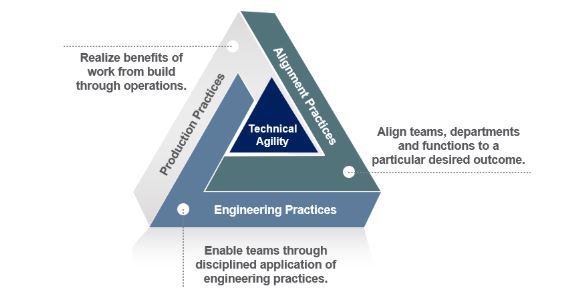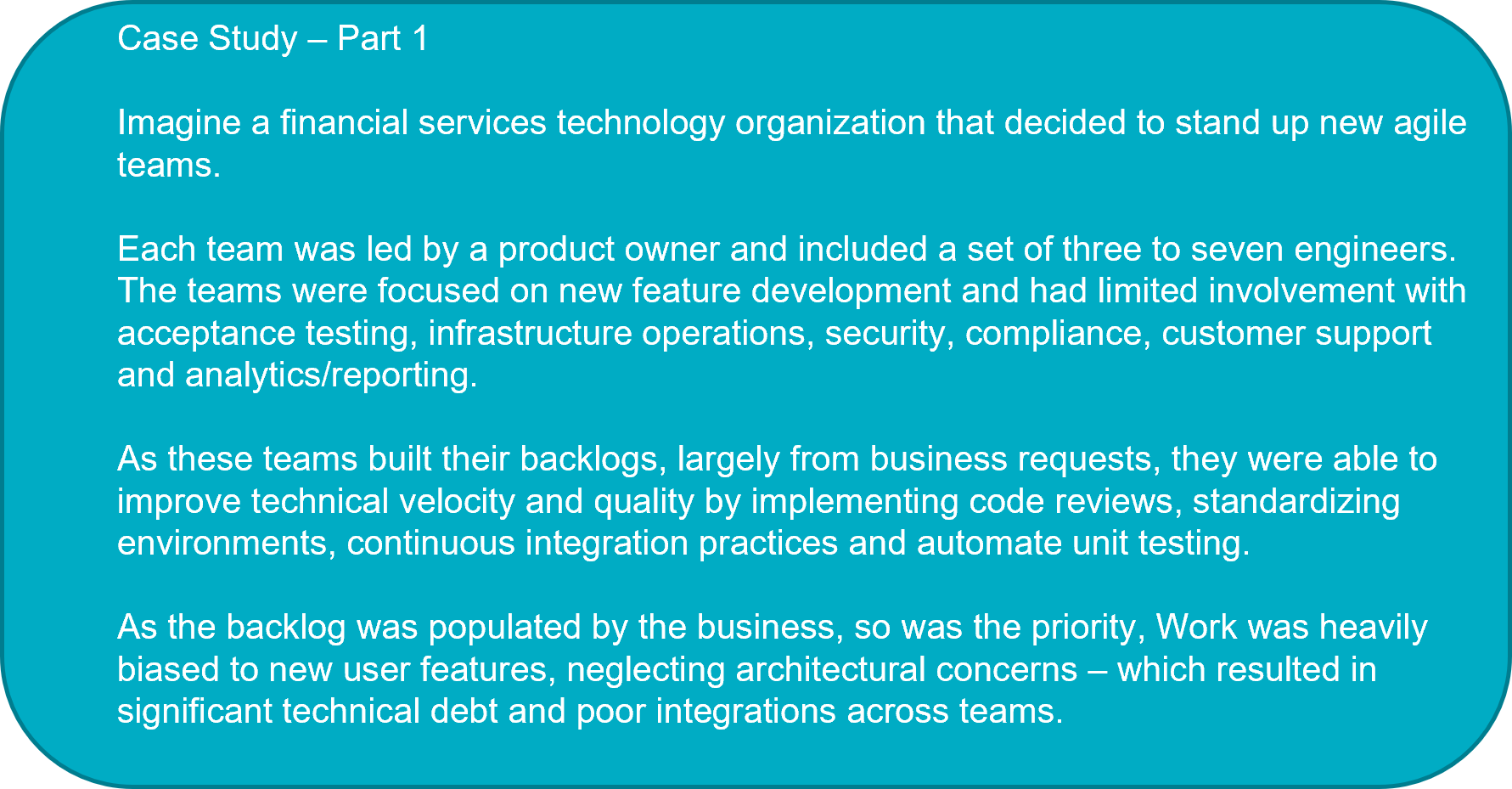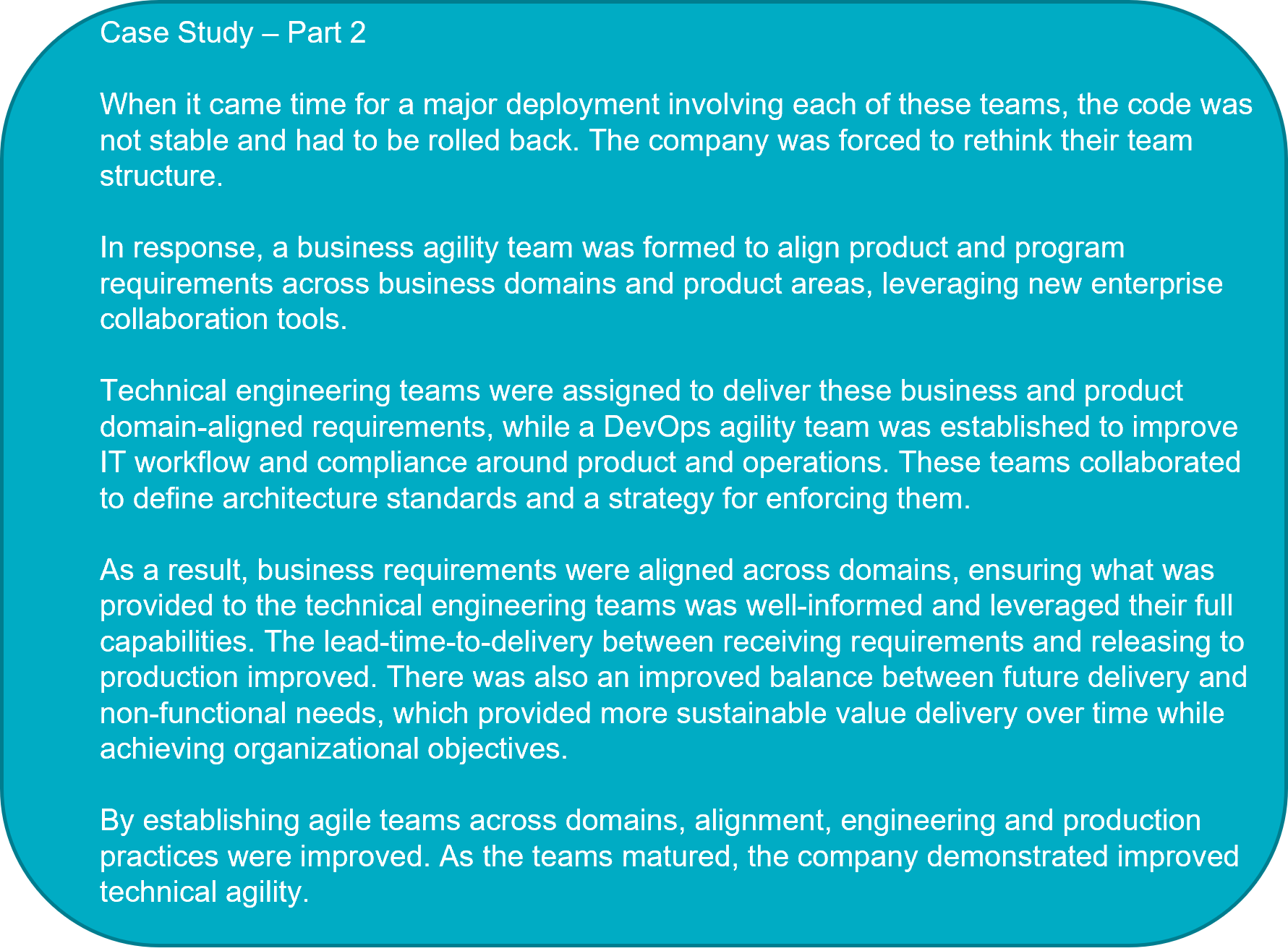Agile practices are enabling teams across organizations to reimagine how to manage change and deliver services, but to achieve true business agility and become agile across the organization, it is crucial that we think beyond the scope of a team.
Cross-functional leadership must recognize the need to work across lines of responsibility and address concerns of COOs, CIOs, CISOs, CDOs and other organizational leaders that influence the ways of working within an organization.
Achieving agility is not simply about following a framework or set of rules, it is about balancing speed and control while considering different aspects of how organizations operate and the underlying practices or processes that enable, or disable, them from achieving agility.
In this blog post, we break down what technical agility should mean to leaders across organizations and what needs to be considered as we look ahead to a new year.
The multiple dimensions of technical agility
Over time, business processes have become stabilized and standardized to be compliant and predictable; however, these same processes are now being disrupted more than ever by internal and external influences. These influences include, but are not limited to, new customer expectations and demands, shareholder pressure, market disruptions and even new ways of working within our own organizations.
Today, an organization’s capabilities are progressively enabled by an ecosystem of services and providers. As the interrelationships of these capabilities become increasingly difficult to predict, enterprises must look to new, modern control mechanisms to allow greater opportunity to embrace innovation and adapt to change.

Technical agility, which is represented above as three distinct sets of practices, should be considered as a key enabler of that embrace. These three sets of practices enable business processes in a modern setting to ensure the organization can stay ahead of competitors and other negative influences.
Alignment Practices
Alignment practices enable the alignment of teams, departments and functions of an organization to a particular desired outcome, product, or service, including the ability to sustain that alignment as desired outcomes change over time.
 Methodologies such as the Scaled Agile Framework (SAFe) or Large-Scale Scrum (LeSS) will be helpful to align activities and outcomes across teams as agile practices continue to scale and influence areas of the organization outside of IT.
Methodologies such as the Scaled Agile Framework (SAFe) or Large-Scale Scrum (LeSS) will be helpful to align activities and outcomes across teams as agile practices continue to scale and influence areas of the organization outside of IT.
With that said, traditional forward planning methodologies, such as Waterfall, will still have a role to play, especially where all required tasks to achieve a desired outcome are clearly understood. While Waterfall still contains alignment practices, these are typically well defined and exist in a stable project plan, rather than as a dynamic ongoing process. As a result, the outcome risk increases with this approach due to longer feedback cycles, while execution risk is manageable. Therefore, suitability may apply in an environment with an aligned risk appetite.
Engineering practices
Engineering practices focus on the practices that enable enterprises to achieve technology-driven outcomes and goals. For IT and engineering teams, this is about the software engineering practices that facilitate the development of high-quality software.

Historically, shortcomings in this area have been mitigated by overly detailed requirements, comprehensive testing and refined QA and operational activities. This is only sustainable in an environment with large, infrequent release cycles.
Shorter release cycles and feature-driven development driven by constant feedback loops are difficult to sustain from a technical architecture perspective. Disciplined engineering methods, such as Extreme Programming (XP), should be considered and implemented. These methods include, but are not limited to:
- Small releases
- Simple design
- Code refactoring
- Paired programming
- Collective ownership
- Continuous integration
- Coding standards
- Test-driven development
These and similar practices, coupled with Agile retrospectives, underpin sustainable, responsive technical delivery.
Production practices
Production practices address the processes of getting work out of a state of development to realize the value and benefits of that work. For engineering teams, this is about getting software deployed to production and operating it. This includes all the control processes of enterprise SDLCs, such as security, quality, compliance and testing/QA.
In predictable environments, these activities are thoughtfully planned out and included in a detailed project or release plan. This plan would extend over several months, with any rework often resulting in up and downstream disruptions.
In an environment where change is embraced, these processes require automation to facilitate communication of issues to teams in near-real time so that they can be addressed well before code is being prepared for a production deployment. The orchestration of processes across development, deployment, and operations is commonly referred to as DevOps.
Next steps
For organizations to achieve business agility, they must understand how well they are applying agile practices across the three areas of technical agility discussed above.
Being able to inspect and adapt to ensure organizational goals are being achieved is key to being an agile organization. Knowing the questions to ask and improvements to make can be the difference between improving agility or being stuck in a cycle of working harder and harder to stand still. Protiviti’s Technical Agility Assessment helps organizations evaluate their strengths and areas for improvement. Please reach out to learn more about this Protiviti offering.
Readers may also be interested in this post: What Do Thriving Organizations Have in Common? Business Agility.
To learn how Protiviti helps organizations achieve business agility and transform the IT organization, contact us.






